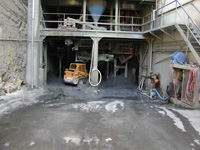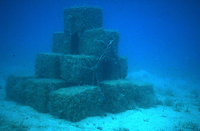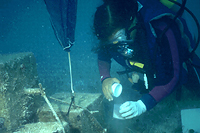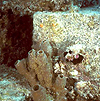 |
|
ASH DISPOSAL
About 5 to 10 percent of the total refuse incinerated is left in the form of ash and clinker. So there is the problem of what to do with the residual ash which has potentially high amounts of poisonous metals and other compounds. The solution is to mix the ash with concrete and make large square blocks that can be dumped into the ocean and used to form new "land". The blocks can also be used as a retaining wall for trash that can not go in the incinerator, such as cars, refrigerators and other big hunks of metal or concrete! The blocks go into the ocean to form a wall where other trash can be pushed into the water as well. Then everything is be covered with dirt when it gets near the surface. Concrete Blocks Before going ahead with the plan, the government decided to study what would happen to the blocks once they were in the ocean. What could happen to concrete blocks? Concrete is very similar to the material that forms the coral reef (calcium carbonate) and there are many organisms that can bore into, or eat the surface of the reef. If these organisms did eat the blocks, the toxic metals and other chemicals could kill these organisms or become part of the food chain and eventually end up threatening the health of other animals including humans! Castle Harbour The ash blocks were set down at about 30 ft in Castle Harbour near the airport where the landfill for the large items is located. Upon inspection it is seen that the blocks were covered with what looks like fuzz which is really a wide range of organisms that have colonized the surface, especially algae. Artificial ash block (impact) and concrete-only (control) reefs were set up in Castle Harbour and in Tynes Bay near the incinerator and continue to be monitored on an annual basis. Aspects of the potential fate of chemicals from the blocks and effects on organisms have been studied since they were installed in the winter of 1992. So far there has been no clear evidence of increases in the levels of trace metals (copper, cadmium, lead, zinc and nickel) in sediments adjacent to the ash reefs compared to the concrete-only control reefs in either Castle Harbour or Tynes Bay. These results would indicate that the ash blocks may be only very slowly releasing contaminants into the environment. Communities of organisms
Using photographs, the community of organisms living on the artificial reefs are monitored. At present, the abundance and diversity of animals (sponges, tunicate and corals) living on the surfaces of the Castle Harbour and Tynes Bay ash blocks are comparable to the concrete-only control reefs. This suggests that the toxicity of the ash blocks is low, allowing more animals to colonize the reefs as well as for more growth of organisms that have been present on the blocks for some time, e.g. encrusting sponges. |




